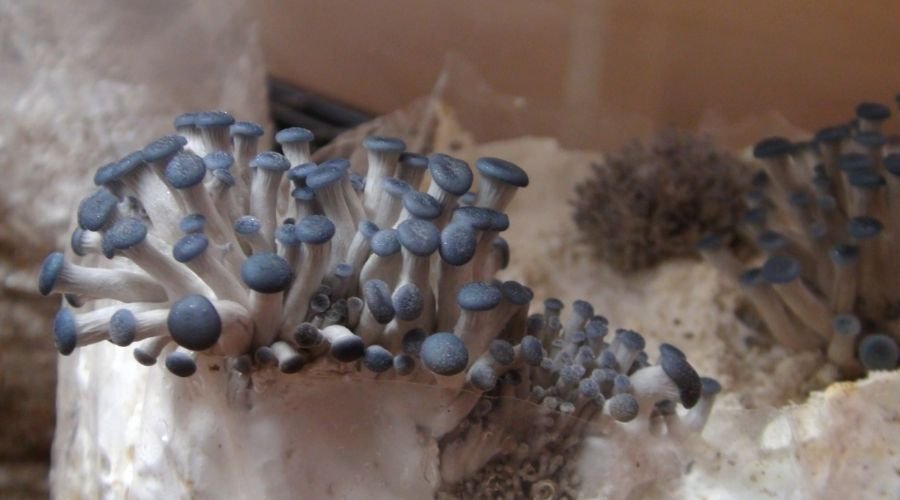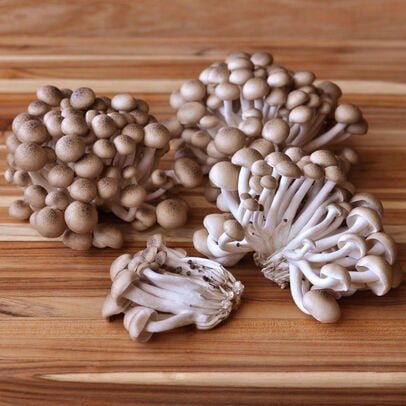Blue shimeji (Pleurotus ostreatus)

Blue shimeji mushrooms are a unique and delicious addition to many dishes. They are native to East Asia and have a nutty flavor. You can find them in Asian or Japanese markets, as well as Whole Foods. When buying them, look for firm caps that are free of bruises and look unwilted. Store them in a plastic bag and use them within a few days. They can be substituted for shiitake mushrooms and oyster mushrooms in recipes.
Buy A Blue Shimeji Mushroom Grow Kit Today
Tanba Shimeji is the true shimeji mushroom
The Tanba Shimeji mushroom is a small to medium-sized mushroom with a smooth, rounded cap and a semi-thick stem. Its cap is dark brown when young and turns tan with age. Its stem is about ten centimeters long. The mushrooms are often used in soups, stir-fries, tempura, and roasted meats. They pair well with white wine, rice wine vinegar, miso, and duck fat. They keep well for up to 10 days when kept in a paper bag.
The Tanba Shimeji mushroom is native to Japan. It is cultivated in a small region of the country. It can be found in Asian grocery stores, specialty food stores, and online. Generally, shimeji mushrooms are sold in plastic packages. This makes it difficult to inspect the mushrooms. Look for firm, dry caps.
When cooking with shimeji mushrooms, be sure to avoid overcooking them. The flavor is delicate and best enjoyed when they are cooked. Depending on the cooking method, shimeji mushrooms can be prepared in three ways: grilled, roasted, and sauteed. They are also good in salads and omelets.
Before cooking, remember to brown the mushrooms. The mushrooms should be cooked in one tablespoon of oil for every eight ounces of mushrooms. This will ensure that they don’t go slimy. After cooking, you can store them in the fridge or a paper bag for up to five days.
Check Out Our Blue Shimeji Mushroom Spawn
Buna-Shimeji mushrooms are native to East Asia
The Buna-Shimeji mushroom is an edible species native to East Asia. It is widely cultivated in Japan and other parts of the world. Its edible fruits range in size from 13 to 18@c and have a firm texture. They are often added to soups and stews.
They are small to medium in size, grow in clusters and are found on fallen beech trees. They are characterized by a firm texture, a slight nutty flavor, and a sharp taste when uncooked. You can find them at specialty grocers and farmers markets across Asia and Europe, and at specialty food stores in North America.
Shimeji mushrooms are rich in umami-tasting compounds, including guanylic acid and glutamic acid. They also have significant nutritional value, covering 40% of the daily copper requirement. However, their nutritional value largely depends on the environment in which they are grown and harvested. Buna-Shimeji and Bunapi-Shimeji mushrooms are relatively easy to grow and are widely available in Europe.
These mushrooms are native to East Asia and are also grown in the US, Australia and Europe. They grow in clusters and are round in shape. The two main varieties are brown and white, and have a delicate and slightly sweet flavor. They are edible raw or cooked and are perfect for salads.
Buna-Shimeji mushrooms are rich in protein and other essential nutrients, and are great sources of fiber and minerals. They also help lower cholesterol, aid in weight loss, and are useful for managing diabetes. They are also known to be anti-inflammatory, antimicrobial, and anti-parasite.

They have a nutty flavor
Blue shimeji mushrooms have a distinct nutty flavor and are perfect for savory dishes. You can find these mushrooms in Japanese and Asian grocery stores. They are also available at some Whole Foods markets. When buying these mushrooms, look for ones that are firm to the touch, free of bruises, and do not appear wilted. Store them in a plastic bag and use within a few days of purchase. If you cannot find these mushrooms locally, you can always substitute oyster mushrooms or shiitake mushrooms.
The shimeji mushroom family includes a number of species, all with similar flavor profiles. They are native to East Asia, but are also found in some parts of Europe. They are often available at Asian grocery stores and can also be purchased in many supermarkets. These mushrooms are sometimes referred to as beech mushrooms, which refers to their preferred substrate.
Shimeji mushrooms are bitter when raw, but develop a nutty, slightly sweet flavor when cooked. They are a versatile ingredient in a variety of dishes, and have a high umami content. These mushrooms are excellent in stews, soups, and sauces.
Try Our Blue Shimeji Mushroom Ready to Fruit Blocks Now!
They are small to medium in size
The blue shimeji mushroom is small to medium in size and has a delicate nutty taste and crunchy texture. Its cap is white and the stem is about 5-7 cm long and attached with a thick white base. Its flavour is similar to that of almonds. It is best cooked to bring out its rich flavour. Its size is ideal for cooking and can be stored in a loose paper bag at a low temperature.
Shimeji is a broad Japanese term describing over twenty species of edible fungi. It literally means “fungi that grow deep in the forest during the rainy season”. The wild Tanba Shimeji is regarded as a common field mushroom, while the hon shimeji is the most prized variety by chefs. Though shimeji mushrooms are widespread in Japan, they are not grown extensively.
They are wrapped loosely in plastic
When buying blue shimeji mushrooms, it is important to avoid buying those that are tightly wrapped in plastic. Plastic promotes condensation and can cause the mushrooms to spoil. Loosely wrapped mushrooms can keep their freshness without turning slimy. They can be stored in the refrigerator in a paper bag or wrapped in paper towels. They should be used within five days.
We Have Only The Best Blue Shimeji Mushroom Liquid Culture Available
